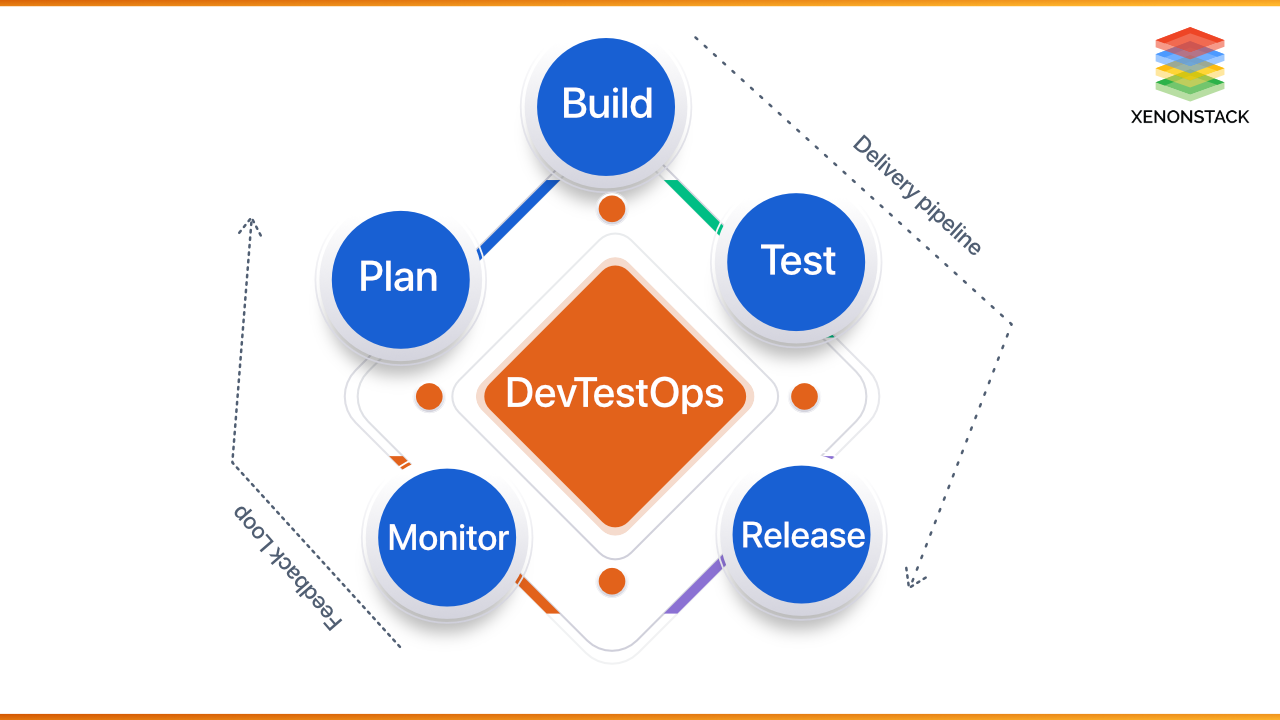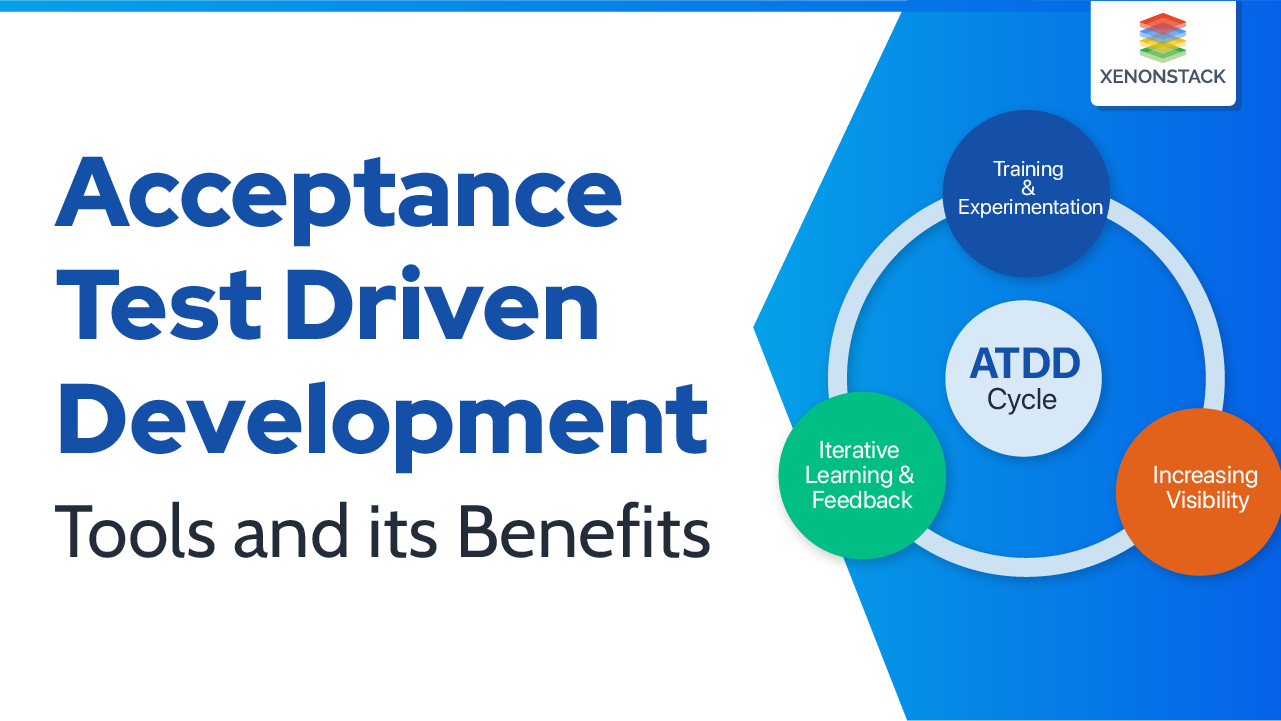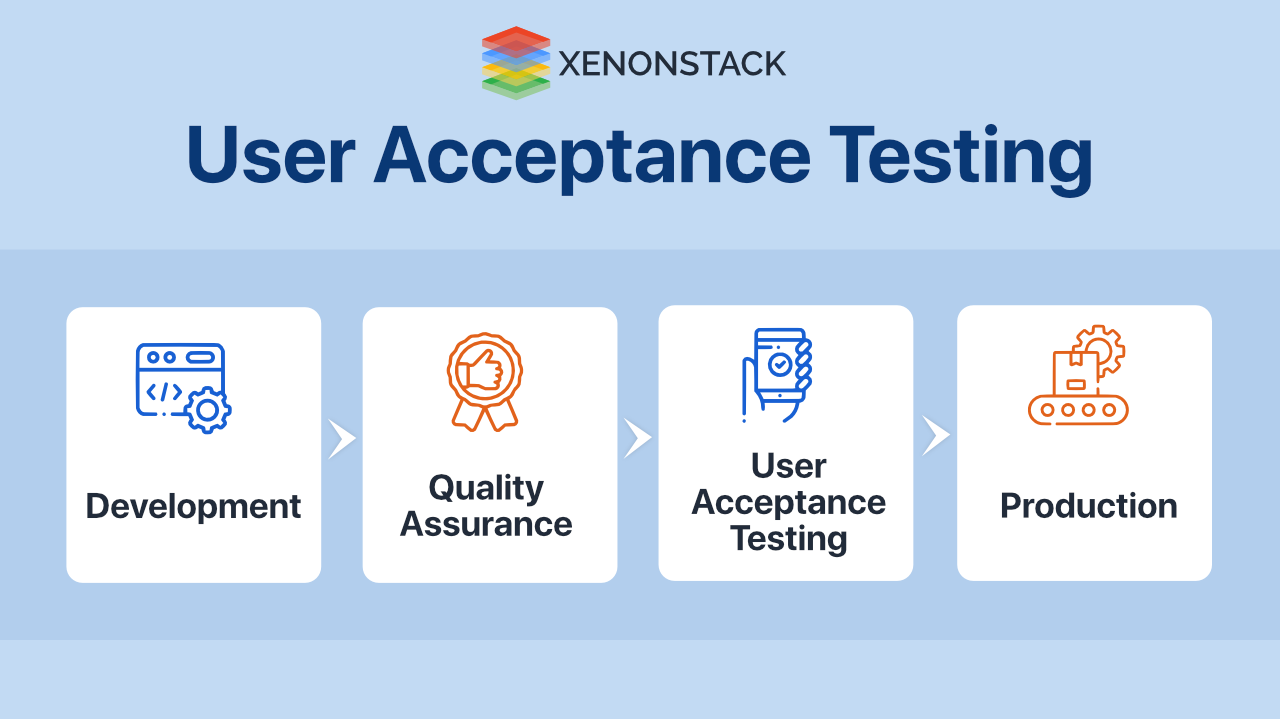
What is DevTestOps?
Invention and improvement is a continuous phase in the technical aspect, giving great and improved versions of current technology for the IT industry. DevTestOps is also an improved version of delivering the software in the software development life cycle. The term DevTestOps describes a combination of steps included in the Development, Testing, and Operations team. This is an increasing approach of software development and Operation to successfully implement Continuous Integration and Deployment with proper product testing.
A process in which, Modern software engineering Culture and Practices to develop software where the development and operation teams work hand in hand as one unit. Click to explore about, What is DevOps and it's Processes?
What is DevOps?
DevOps is a combination of Development & Operations processes in IT terms to deliver software by going through code, build, and deploy.
What are the benefits of DevOps?
- Fast Delivery - DevOps improves the speed of releases and bug fixes so that you can respond to client needs faster and gain parallel advantages.
- Better Collaboration - In this Procedure development and operation team merges and make a fast and effective environment of faster delivery to the client with proper testing with an Automated structure in the CI/CD Pipeline.
- Reliability - With a faster delivery, it also provides monitoring and logging to help you be aware of the real-time performance of the delivery.
- Scalability - This infrastructure helps you manage all three in one DevTestOps environment in a better and repeatable way.
What is TestOps?
TestOps applies automation by taking multiple teams (especially DevOps) together to increase the speed of the release process. Test automation is very important for the Devops cycle of successful deployments. Although it is critical, it is fast and provides high-quality product delivery.
The ways TestOps helps in release cycle improvements -
- Helps in automated functional, load, and reliability testing.
- It helps to achieve continuous integration and delivery in a smother pattern.

Why is DevTestOps required?
- The most important fallback of normal devops and testing flow is its delay while in the future with each iteration/level. The slow feedback process creates delays in deployment.
- Testing is required at each & every environment of the software delivery to test the delivered functionality. This takes the QA team to manually apply multiple permutations and combinations for the build, and apply and upgrade the functionality.
A methodology or an operating model that establish an Agile relationship between growth and IT operations. Click to explore about, DevOps on Google Cloud Platform
Enablement of Testing in Devops Pipeline
For successful DevTestOps implementation, below steps are followed -
Multiple commits by different developers
Developers do the code Phase in the DevOps pipeline by making multiple commits between teams. The code accompanying the unit test is committed in a source repository as the complete code. That commit initiates a build process in the pipeline.
Static analysis/testing of code
There are different tools available in the market to perform the static analysis: SonarQube. This stage takes care of the below-mentioned points.
- Checks the code standards and styling.
- Checks memory leakages to check resource utilization.
- Check for breakage of security vulnerabilities and wrong AI calls.
Build
As the build initiates by the trigger of the commits done by developers, when the code compiles, and the unit test passes up to 80- 85% ( varies according to the projects ), the build is considered successful. If the unit test cases fail and result in a percentage less than a defined threshold, the build will be unsuccessful and roll back the previous successful commits by developers. In this form, we successfully create the codebase.
Unit and Integration Testing Phase
Unit Test is created to test the smallest possible testable module named Units. Developers write unit tests to know how much of the code is covered by test cases and working fine. Unit testing is an essential part of the testing in the DevOps pipeline, which needs to be automated. This part of unit testing comes under the code phase of the pipeline.
Integration Testing tests whether the API is working or the modules are working after taking them together as software and required test cases. In the Pipeline to do such testing, one can use the mock of databases or data to protect the test to fail because of database downtime or service unavailable issues.
Application /Service Image creation
In the next stage, an image is created by taking the libraries, dependencies, application code, tools, and other files to make an application or software runnable.
Big Data is the trend that is revolutionizing society and its organizations due to the capabilities it provides to take advantage of a wide variety of data, in large volumes and with speed. Click to explore about, Big Data Testing Best Practices
Functional and User Acceptance Testing Phase
This is also initiated at the time of the “Staging phase” other than the testing done at the prior phases consisting of Unit and Integration Testing. A complete system setup needs to be available for end-to-end testing at this pipeline stage.
Automation Configuration
Configuration management is critical in the devops pipeline to verify that the right software is delivered correctly. Configuration management can get the functional and non-functional characteristics of a configuration asset discovered and documented. This asset could be anything like a module, parameters for system config, or any instructions for hardware setup.
Performance ( Load Testing )
At the time of “Staging,” different types of performance test scripts have been executed to check the real user's behavior while providing quantity to the software to check the condition of normal and peak load conditions. Through performance testing, one can check response time, resource utilization, and throughput rates and find the points where a system breaks.
Drawbacks of using Performance Tests -
- The performance test scripts take too long to run, which is time-consuming at the time of deployment of the application.
- It can be resource concerted.
The staging environment must be the exact copy of the production environment to get accurate and exact results.
Deployment
Continuous Deployment takes the delivery process forward, which passes all the devops pipeline stages and releases for Users/Clients. The deployment trigger with the full pipeline process is automated. The percentage of failed test cases can stop the release to the production environment.
Release Validation Process
The validation process to validate if the product is deployed overproduction with security and functionality working as expected.
A rising technique to complete the Development, Operations, and Quality Assurance work together to discover more valuable and time-efficient products in the market. Click to explore about, TestOps Best Practises and Working
What are the advantages and disadvantages of DevTestOps?
The advantages and disadvantages of DevTestOps are listed below:
Advantages
- Less requirement of manpower for testing and deployment as it is mostly automated.
- It is time-saving because of the automation of the CI/CD pipeline.
- One-click process of testing and deployment.
- Fewer deployment errors.
- Easy error debugging.
Disadvantages
- Outsourcing infrastructure will require a specific level of software development expertise.
- Making an environment the same as production is complex and can lead to compatibility issues.
- Security will always be a major concern as it is not a part of DevTestOps.
What are the best practices for DevTestOp?
The following are good practices needed to establish a successful CI process:
- Keep working only with one repository for code and automate the build process for code commits.
- Merged codes should contain unit tests to check code & test coverage.
- Code should merge as fast as it is ready to be integrated.
- Authentication of users is required, and the requirement of build server maintenance.
- Always keep the integrity of the commits done by developers.
The following are good practices to establish for a successful Continuous Delivery process:
- All the environments will copy the production environment.
- Have a strong grip of automation over the deployment process.
The following are good practices to establish for a successful Continuous Testing process:
- Introduction of shift left testing in the integration stage results in confidence over application.
- Check and apply test automation through the whole pipeline to avoid unnecessary errors in deployment.
- Use of effective testing tools in continuous testing.
- Always update and review the already in use test cases for better code & test coverage.
The following are good practices to establish for a successful Continuous Deployment process:
- It will be great if all the deployment processes are done automatically and avoid human interaction.
- We need to conduct each step testing in the whole pipeline to confidence deploying the application overproduction environment.
- The team needs to be prepared for the rollback process if required.
- Enable Smoke test in the pipeline to verify if the core and basic functionalities are working correctly.

Summary
As we learned above, the combination of Development, Testing, and Deployment work as a process named DevTestOps makes the work easy and release fast but does not resolve all the challenges. To work smoothly with Devops pipeline setup, one needs to work with best practices to get the benefits of fast and reliable software deployment.
- Discover more about Software Testability Metrics
- Click to explore about Design Patterns in Automation Testing


